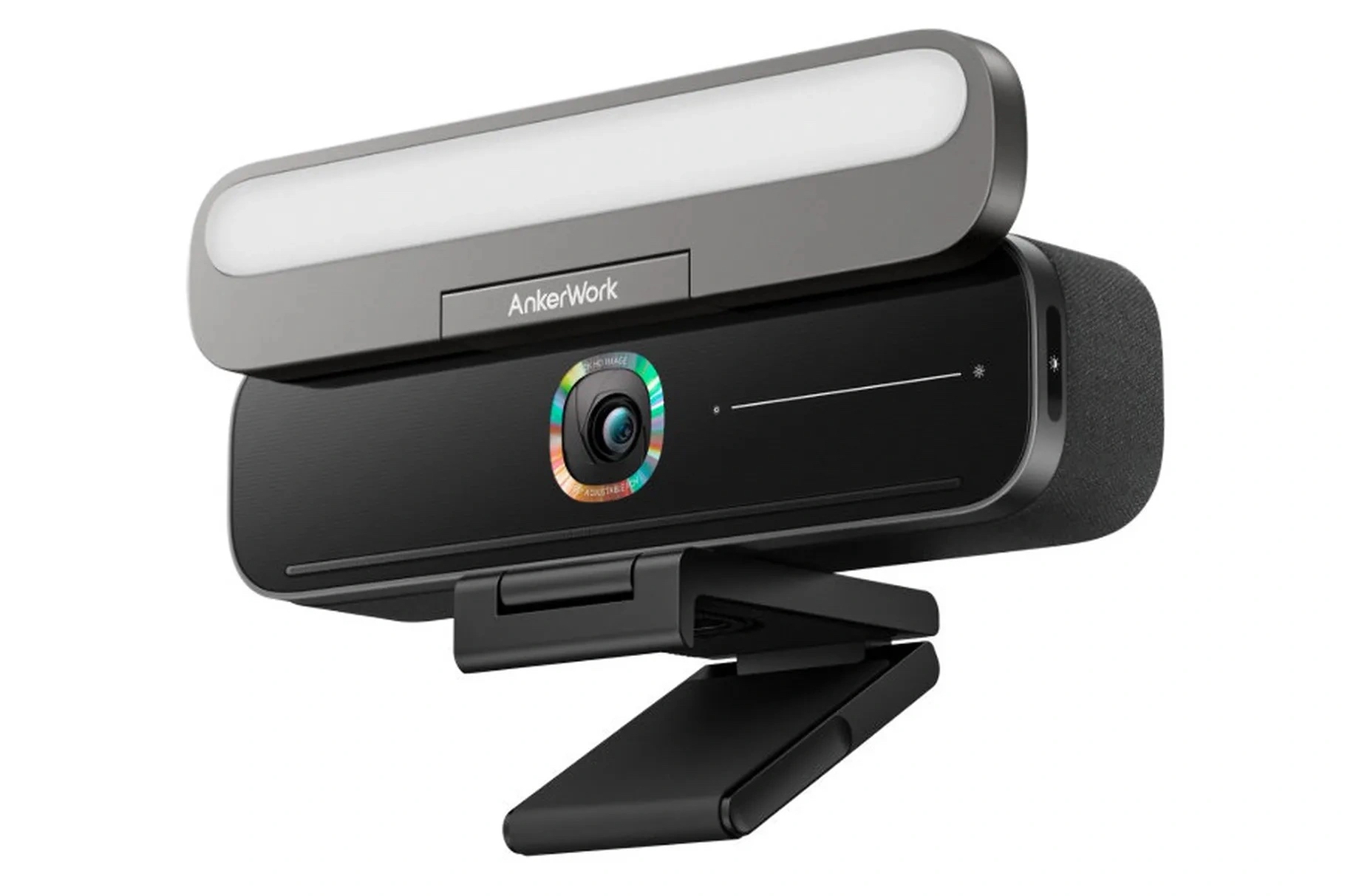The ongoing pandemic has thrown yet another wrench in our return-to-office plans, leaving more room for manufacturers to up the ante when it comes to remote work gear. And China-based accessory maker Anker’s new Video Bar might just be all you need to look and sound your best in virtual meetings.
At CES this year, Anker unveiled the B600 Video Bar, an all-in-one videoconferencing accessory that combines a speaker, light, microphone, and webcam in a single device. It sells for a comparatively steep price — ($220 — but Anker hasn’t cut any corners in specifications, and the Video Bar features a laundry list of high-end components.

Like any other webcam, the Video Bar’s rig rests on top of your monitor or TV. It comes equipped with a 2K camera sensor maxing out at 30 frames per second, an array of built-in speakers, and a total of four microphones that can intelligently cut any background noise and boost your own voice.
The highlight of Anker’s B600 Video Bar is arguably the light bar sitting on top of the webcam for people whose room lighting makes them look like they’re reporting from a military bunker. The Video Bar’s lighting setup also takes advantage of a range of sensors to automatically adjust the brightness and white balance. There’s even a physical slider upfront that you can tweak to manually tune the brightness.
The webcam also houses a handful of clever software tricks. Most notably, it can zoom on its own to always keep the focus on your face, and an image enhancement tool works in the background to sharpen the feed as much as possible — even on slow connections. The Anker B600 Video Bar plugs into computers through a USB Type-C cable and offers a companion app for you to further tweak the color temperature and picture quality.
The Anker B600 Video Bar will go on sale in the United States for $220 starting January 25 and pre-orders open today. It’s priced at 220 British pounds in the U.K. and 230 euros in other European Union countries.



